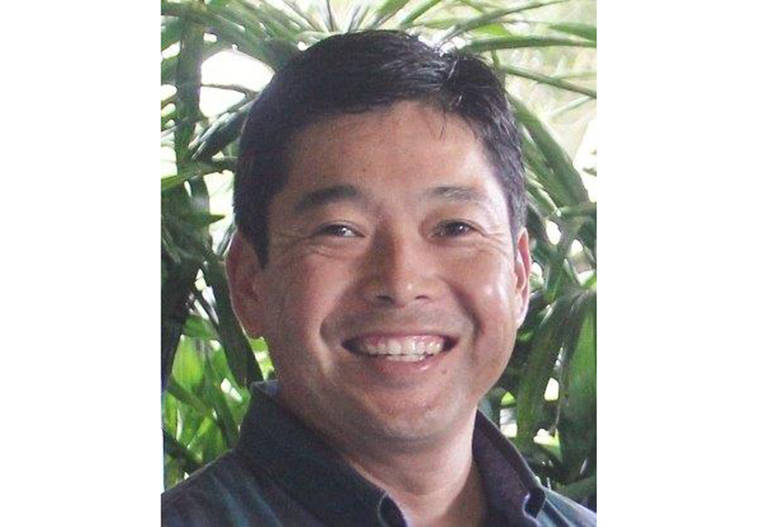Engineer: Restoration of water to lower Puna not feasible
The county Department of Water Supply has no current plans to restore water service to Kapoho and the area around Pohoiki as lower Puna continues to recover from the 2018 eruption of Kilauea volcano, but was not “shutting the door” on a possible restoration in the future.
Department manager and chief engineer Keith Okamoto told County Council members last week during a meeting of the council’s Agriculture, Water, Energy and Environmental Management Committee that restoration efforts would be cost prohibitive and that current conditions are unsuitable for water infrastructure repairs.
ADVERTISING
Within the Kapoho-Pohoiki water system, two 100,000-gallon concrete reservoirs at Lanipuna Gardens and Kapoho are still standing but isolated by lava, Okamoto said. The Kapoho well, chlorination and control building was covered by lava and 14.5 miles of waterline was rendered unusable, 9.5 miles of which was actually inundated by lava.
According to Okamoto, the lava flows cut off 249 service laterals, or copper pipes that extend from water mains that can feed one or more services, affecting 439 accounts, including 226 active meters and 32 fire hydrants.
Okamoto told the committee that gaskets on underground pipes can only handle temperatures up to around 200 degrees.
“And our understanding is lava’s a bit hotter than that,” he said. “We’ve run into this situation back in Kalapana as well. We know that the gaskets get compromised and there’s serious leakage, and basically you can’t operate the water system under those conditions.”
Okamoto said a temporary water system can’t be installed because it would need to be built to required standards, and the understanding from discussions with the county Public Works, which is working to restore access on Highway 132, “ is that it’s still hot out there.”
Some temperatures are in excess of 600 degrees, he said.
“Again, our water infrastructure would not survive those kinds of conditions anyway,” Okamoto said. “Even if it did, we’d be piping boiling water and that really doesn’t work.”
Another concern is that the lava flows “increased the terrain” by about 100 feet in certain areas, which would affect the hydraulics, he said.
“Just replacing what was put there may not actually work any more because we might have peaks and valleys that you’d have to put in additional tanks or boosters … that may not have been needed previously,” he continued. “But those are engineering details that could probably be worked out.
“We’re not shutting the door at all at this point, we’re just saying at this time, we don’t have immediate plans to restore infrastructure in the area.”
Future plans would depend on funding from the Federal Emergency Management Agency and final recovery plans.
“So what we’re kind of doing right now, we’re kind of in a holding pattern,” Okamoto said.
DWS is involved in the county’s recovery effort and is waiting to see what the results will be “before we really start to make commitments for funding infrastructure in other areas, because overall, we want to be consistent with what the county’s plans are …”
DWS estimates that it will cost $38.4 million, including engineering and other fees, to replace the water system.
If approved for FEMA funding, Okamoto said the department would be eligible for 75 percent of the estimate, or about $28.8 million. DWS would have to come up with the balance of the amount.
In a follow-up phone conversation, Okamoto said DWS sets aside capital improvement funds in its budget each year, so the department “should be fine for covering the balance.”
A FEMA funding application was submitted last October.
Okamoto addressed with the committee, too, discussions about the possible use of a private well to provide water in restroom facilities at Isaac Hale Beach Park.
“So we were able to work with an individual who owns a property about a mile and a half mauka of Isaac Hale Beach Park, and initially the water quality was potable,” he said.
But the property owner noticed a “significant change” in his water quality.
“Basically, the water quality deteriorated to the point where it won’t be drinkable and it would actually be corrosive to plumbing and fixtures and what not.”
Puna Councilwoman Ashley Kierkiewicz said it was a “very sobering presentation, but it’s good to know you’re not shutting the door completely on water restoration for the area. It seems to me we’re in a holding pattern, waiting for the risk assessment, for the comprehensive plan, for that data to come in to really help your long-term decisions and next steps.”
Email Stephanie Salmons at ssalmons@hawaiitribune-herald.com.





